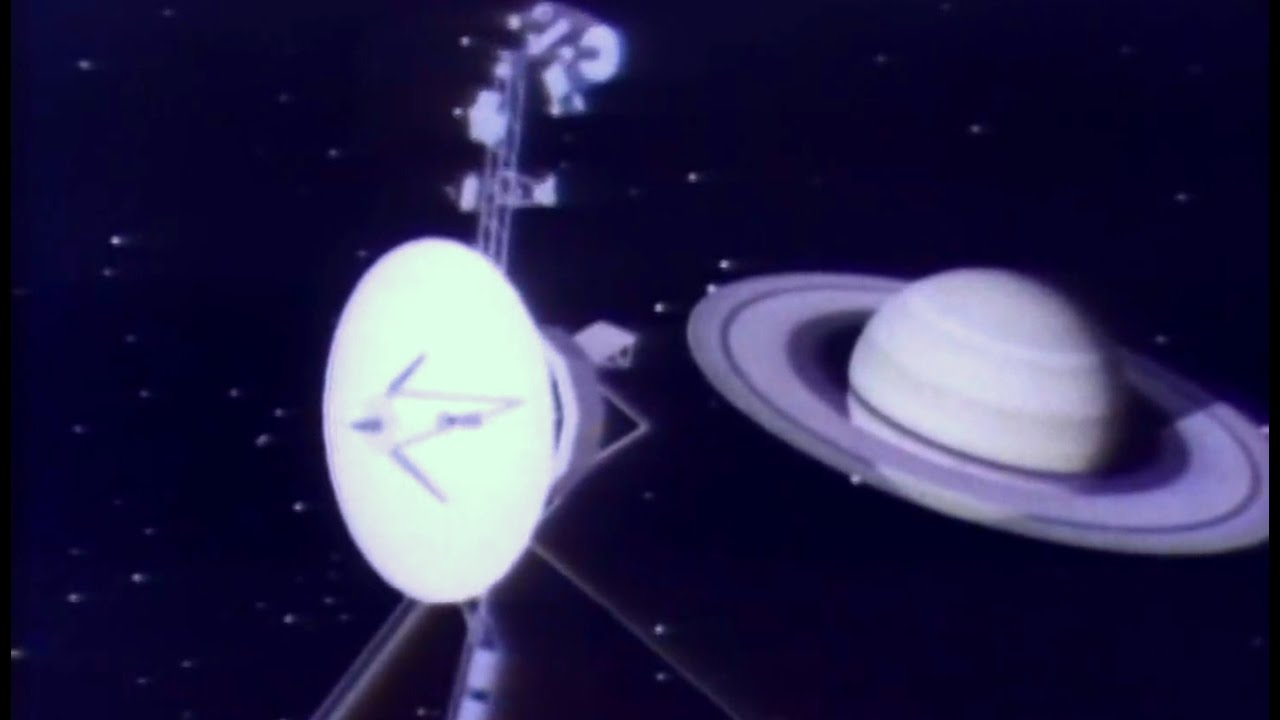Solar System playlist:
more at
“AL HIBBS, DR. EDWARD STONE, DR. BRAD SMITH, DR. DANIEL GAUTIER, AND DR. ANDRE BRAHIC, SCIENTISTS, JET PROPULSION LABORATORY, DISCUSS THE DISCOVERY OF NEW MOONS, ATMOSPHERIC COMPOSITION… SHOWS RECENT VOYAGER PHOTOGRAPHS.”
Reupload of a previously uploaded film, in one piece instead of multiple parts, and with improved video & sound.
Public domain film from the US National Archives, slightly cropped to remove uneven edges, with the aspect ratio corrected, and one-pass brightness-contrast-color correction & mild video noise reduction applied.
The soundtrack was also processed with volume normalization, noise reduction, clipping reduction, and/or equalization (the resulting sound, though not perfect, is far less noisy than the original).
The Voyager 2 spacecraft is a 722-kilogram (1,592 lb) space probe launched by NASA on August 20, 1977 to study the outer Solar System and eventually interstellar space. Operating for 34 years, 7 months and 2 days as of today (22 March 2012), the spacecraft receives routine commands and transmits data back to the Deep Space Network.
Part of the Voyager program with its identical sister craft Voyager 1, the spacecraft is currently in extended mission, tasked with locating and studying the boundaries of the Solar System, including the Kuiper belt, the heliosphere and interstellar space. The primary mission ended December 31, 1989 after encountering the Jovian system in 1979, Saturnian system in 1980, Uranian system in 1986, and the Neptunian system in 1989. It was the first probe to provide detailed images of the outer gas giants…
Conceived in the 1960s, a Grand Tour proposal to study the outer planets, prompted NASA to begin work on a mission in the early 1970s. The development of the interplanetary probes coincided with an alignment of the planets, making possible a mission to the outer Solar System by taking advantage of the then-new technique of gravity assist.
It was determined that utilizing gravity assists would enable a single probe to visit the four gas giants (Jupiter, Saturn, Uranus, and Neptune) while requiring a minimal amount of propellant and a shorter transit duration between planets. Originally, Voyager 2 was planned as Mariner 12 of the Mariner program however, due to congressional budget cuts, the mission was scaled back to be a flyby of Jupiter and Saturn, and renamed the Mariner Jupiter-Saturn probes. As the program progressed, the name was later changed to Voyager as the probe designs began to differ greatly from previous Mariner missions.
Upon a successful flyby of the Saturnian moon Titan, by Voyager 1, Voyager 2 would get a mission extension to send the probe on towards Uranus and Neptune…
Spacecraft design
Constructed by the Jet Propulsion Laboratory, Voyager 2 included 16 hydrazine thrusters, three-axis stabilization, gyroscopes and celestial referencing instruments (Sun sensor/Canopus Star Tracker) to maintain pointing of the high-gain antenna toward Earth. Collectively these instruments are part of the Attitude and Articulation Control Subsystem (AACS) along with redundant units of most instruments and 8 backup thrusters. The spacecraft also included 11 scientific instruments to study celestial objects as it traveled through space.
Communications
Built with the intent for eventual interstellar travel, Voyager 2 included a large, 3.7-meter parabolic, high-gain antenna (see diagram) to transceive data with the Deep Space Network on Earth. Communications are conducted over the S-band (13 cm wavelength) and X-band (3.6 cm wavelength) providing bandwidth as high as 115.2 kilobits per second. When the spacecraft is unable to communicate with Earth, the Digital Tape Recorder (DTR) is able to record up to 62,500-kilobytes of data to later transmit when communication is reestablished.
Power
The spacecraft was built with 3 Multihundred-Watt radioisotope thermoelectric generators (MHW RTG). Each RTG includes 24 pressed plutonium oxide spheres and provide enough heat to generate approximately 157 watts of power at launch. Collectively, the RTGs supply the spacecraft with 470 watts at launch and will allow operations to continue until at least 2020…

